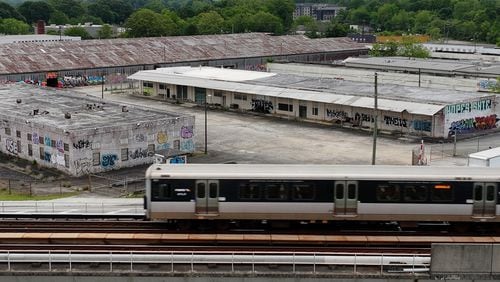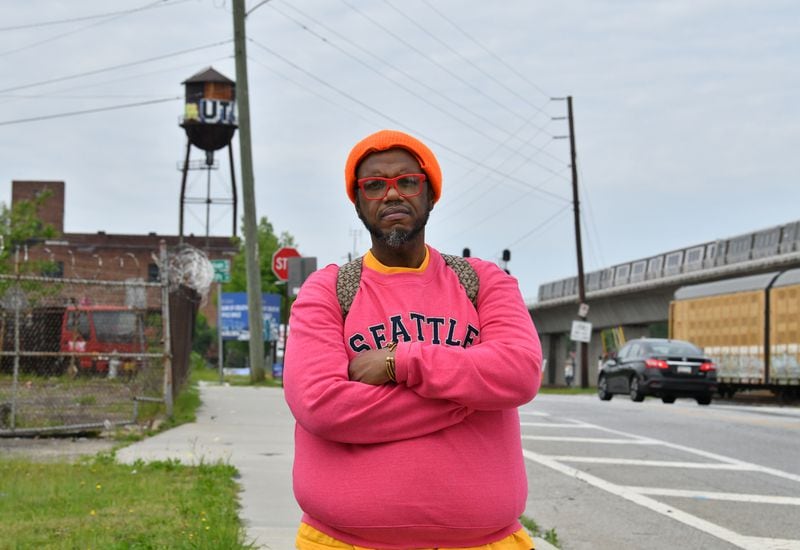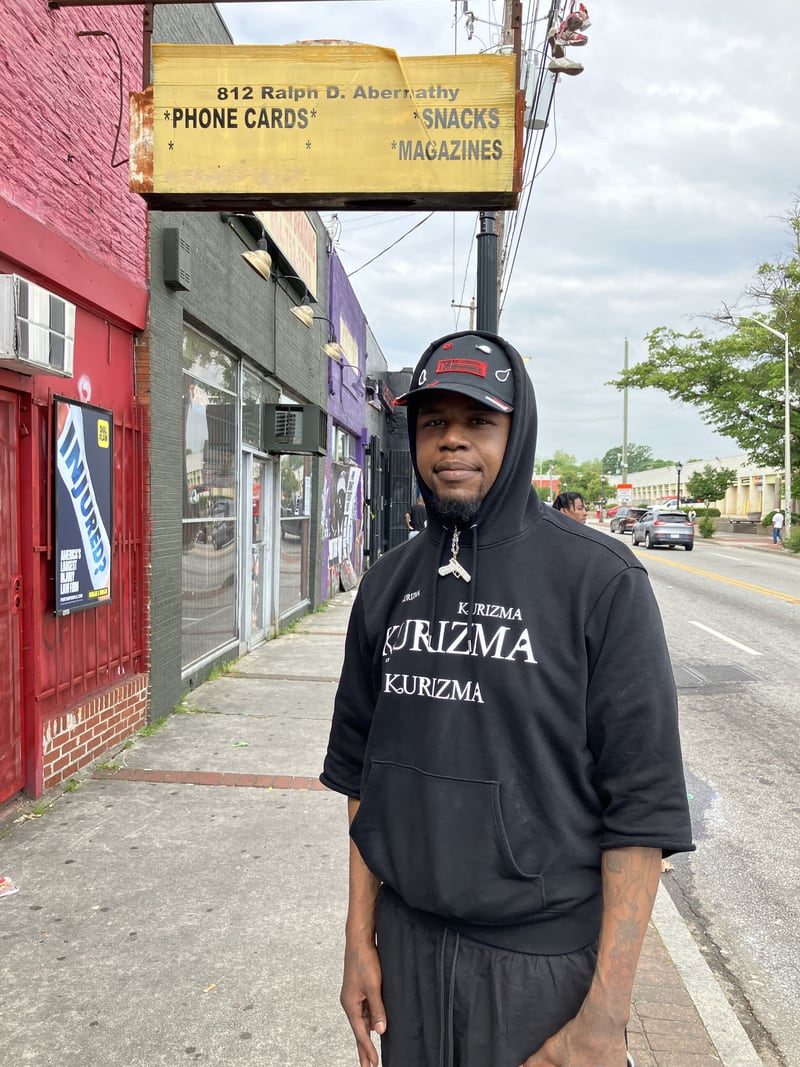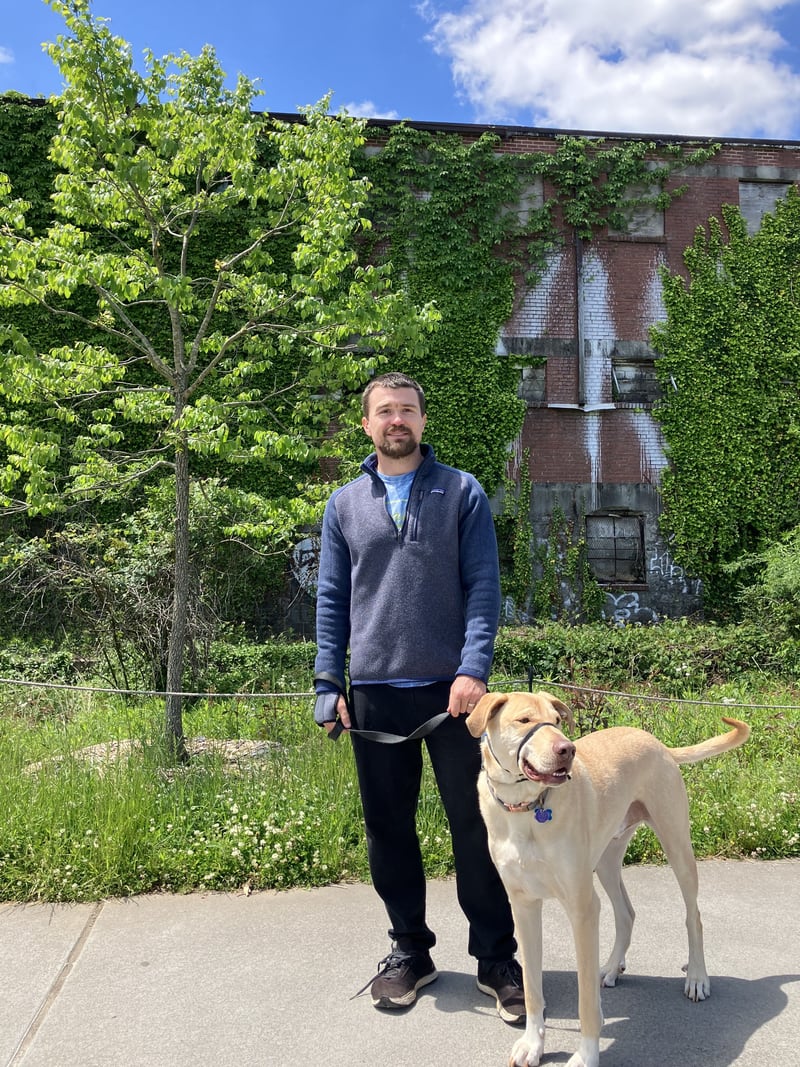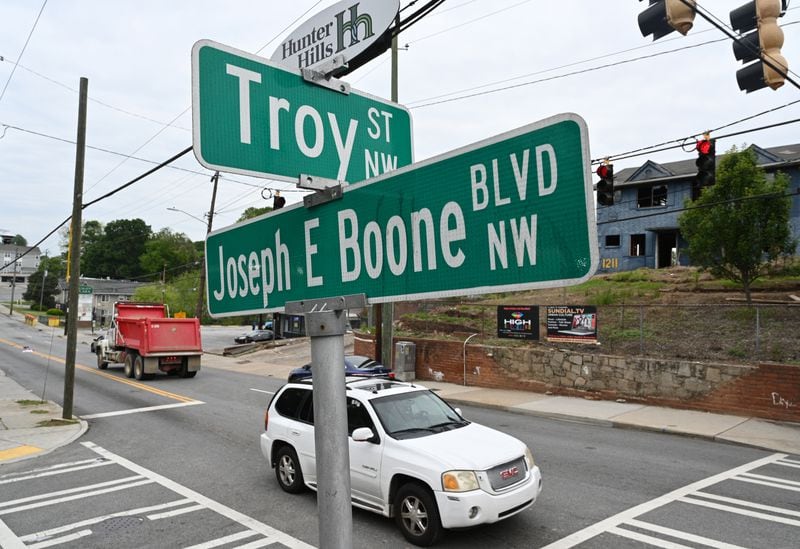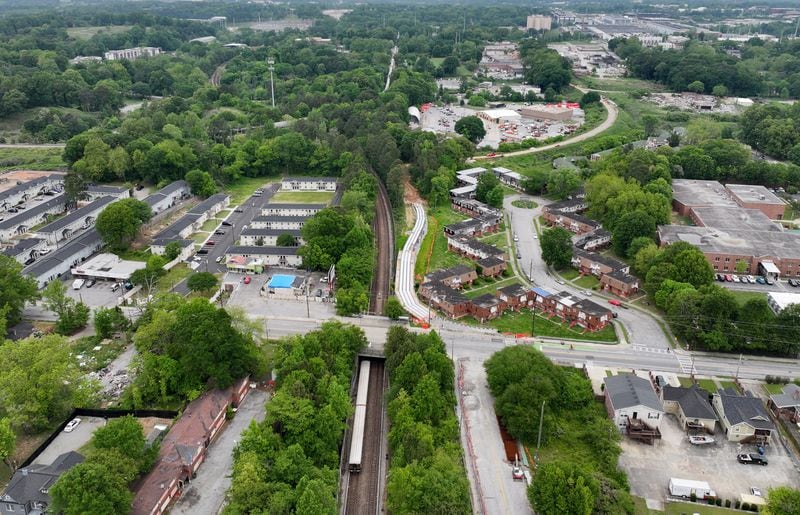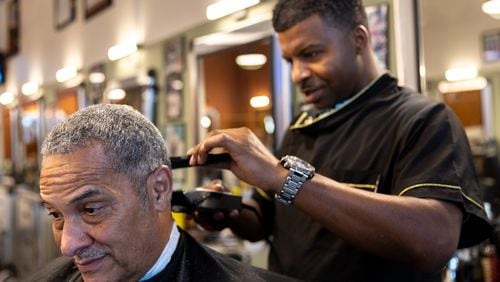Once a week, Quadrus Black makes his way from his home in the city of Atlanta’s West End to the DeKalb Farmers Market. Since the pandemic, Black sold his car and relies on MARTA or rideshare services to get around.
The trip to DeKalb County takes about 45 minutes, on a good day. As MARTA is set up now, Black either jogs about a mile to the Oakland City station and takes the train, or catches a bus on Cascade Avenue to the West End station.
That might change with Atlanta Mayor Andre Dickens’ recent announcement of the city’s plan to build four new MARTA infill stations — the largest expansion to the train network in decades, and the first since the Sandy Springs and North Springs stations opened along the red line in 2000.
“I think that they’re gunning for more new people in this area,” said Black, who is also the chair of the neighborhood’s neighborhood planning unit. “I’m hopeful that something like an infill station at Murphy Crossing and other places ... would attract more riders.”
Credit: HYOSUB SHIN / AJC
Credit: HYOSUB SHIN / AJC
Black joins other neighborhood leaders, residents, business owners, workers and commuters in hope that the new stations will bring only positive developments to the city.
But the news has caused a stir in neighborhoods where the stations are set to be located, raising both excitement about the potential spur of new development but also anticipation and anxiety about where exactly they might be — and the years of disruption that will be caused by construction.
The four locations — Murphy Crossing, Krog Street/Hulsey Yard, Joseph E. Boone and Armour Yards — have been recommended as potential sites for new stations for decades. They were all included in the list of possibilities for the More MARTA infrastructure package approved by voters in 2016.
The Krog/Hulsey Yard and Murphy Crossing locations were also mentioned in the sweeping “Emerald Necklace” study of the Betline from the Trust For Public Land in 2004.
But there are still many unknowns for residents who have little information beyond which neighborhoods have been selected.
“I know they’re talk about building it,” Black said of the Murphy Crossing station. “But we don’t know when or how or where the funding is going to come from — but maybe that’s just above my pay grade.”
It’s not. City officials have not announced how much the stations will cost or how they will be funded.
‘The more the merrier’
Murphy Crossing was the first new MARTA station announced by Dickens, during his annual State of the City Address in March. The other locations remained a secret until recently.
The 20-acre site at 1050 Murphy Ave. SW is one of the largest projects along the Atlanta Beltline, and will include more than 1,000 housing units and 180,000 square feet of commercial space. Now, developers can include a brand new heavy rail station to the site plan.
Maurice Thomas was on his way to catch a train at the Oakland City station recently, heading to Decatur for a haircut. The 63-year-old said any new station added to the MARTA system is an improvement.
“The more the merrier,” Thomas said before catching his ride.
Credit: Reed Williams
Credit: Reed Williams
The Murphy Avenue industrial site — just three miles southwest of Mercedes-Benz Stadium — was at one point a bustling manufacturing hub in Oakland City and then a farmers market in the 1940s. But some may recognize the deteriorating buildings as the post-apocalyptic backdrop in the “Hunger Games” series.
Occasional and frequent MARTA users who live in the Oakland City and West End neighborhoods said they hope a new station means more people coming and going from the area.
About two miles north of the Oakland City station, Yhk Abrahm was walking near the West End station. The 34-year-old welder and West End resident said it makes sense to add a station at Murphy Crossing, given that the former State Farmers Market property there is being redeveloped.
“That would be super convenient,” Abrahm said. “If they’re going to make it more residential, why wouldn’t they put a train station right there?”
He added: “The train is like water in the urban community. Wherever there is a train, there are people.”
As Abrahm was sharing his thoughts, Colby Rowe walked up with his 4-year-old son and joined the conversation.
“The more MARTA stations, the more opportunity there is for people to get a chance to go get a job,” said Rowe, 31, a former tattoo artist who has his own clothing line and lives downtown.
But other residents questioned putting a station at Murphy Crossing, because it will be sandwiched between the West End station just to the north and Oakland City station just to the south.
“You’re just adding another stop, which is going to make things just slower in general on the train,” said Adair Park resident Drew Owen, who was walking along the Westside Trail with his wife and dog.
Credit: Reed Williams
Credit: Reed Williams
‘The past is the past’
Residents who live in Atlanta’s historic West End — particularly in neighborhoods like Vine City and English Avenue — often lament at City Council meetings that traffic from sporting events at the stadium and arena cause a headache for homeowners whose street parking is often filled by attendees.
Craig Geter, who lives near MARTA’s Ashby station, says traffic is bad, even on evenings when there are no events.
“In the evening times, it’s really, really, really, really, really congested here,” he said.
The 67-year-old Vine City resident hopes a new station at Joseph E. Boone Boulevard can ease some of the congestion — especially if it includes onsite parking.
“It’s positive to me as long as we have enough parking for people,” said Geter. “That’s the main thing. It makes no sense to put a MARTA station and you don’t have nowhere for anyone to park.”
Little information has been released about what the new stations will actually look like. During an interview at City Hall in April, Dickens said they won’t mirror Atlanta’s stations that were built decades ago.
“How Atlanta has done stations in the past is the past,” he said. “Moving forward, you can actually build a station that has all the amenities already in it from retail to dry cleaning, to daycare, to apartments, et cetera.”
“So when you build it that way, you’re not just building rail, you’re also building a community at the same time,” he said.
Tim Brown, president of the Historic Hunter Hills Neighborhood Association, says he hopes that Joseph E. Boone Boulevard reemerges as a social hotspot –— as it was half a century ago.
“That station would be a great access point to drive that kind of traffic from the surrounding areas in Atlanta for those who want to come here and hang out for the day, because it’s a beautiful area,” he said.
Credit: HYOSUB SHIN / AJC
Credit: HYOSUB SHIN / AJC
Atlanta Beltline Inc. is already in the process of developing 425 Chappell Road, which sits adjacent to 30 acres of city-owned property near Boone. Including Maddox Park, that means the city has around 60 acres of publicly-owned land in the area that will — after the Beltline is finished — connect directly to the trail system.
“It is absolutely necessary to have a station there to really mitigate the influx of traffic from people driving down here,” Brown said. “That would just give people an easy way, and give people access to wherever they wanted to go.”
Increased access to the Beltline
A central point between Midtown and Buckhead, the Armour Yards development is home to popular social destinations, from SweetWater Brewing Company to the District NightClub.
Last year’s $25 million in federal funding awarded to Atlanta Beltline was slated to be used to extend the Northeast trail 2.2 miles from where it currently ends, through Armour Yards to Lindbergh.
But just east of a set of railroad tracks is another area by the same name. MARTA owns 46 acres of rail yard — called Armour Yard — where trains are stored and maintained. It marks one of five points along the Beltline where the trail is cut across by active train tracks.
Ron Walton used to live nearby in south Buckhead. He has also lived in Grant Park and Inman Park. Five years ago, he moved to the eastern shore of Maryland.
Recently in town for a visit, he walked the Beltline from Grant Park to its current ending point at a post office and passport center near Armour Yard. A lot of the trail wasn’t developed when he moved away.
With the Lindberg MARTA station two miles away, Walton said he thought another stop in the area made sense.
“I think mass transportation is necessary,” he said. “I know it’s the Achilles’ heel of Atlanta but something has to be done.
“It’s a little embarrassing that we don’t have a more comprehensive system.”
Credit: HYOSUB SHIN / AJC
Credit: HYOSUB SHIN / AJC
All four of the new station locations will touch Atlanta’s iconic Beltline trail, providing easier access for riders to hop on the pedestrian pathway or vice versa. Officials also hope new stations paired with the completion of the entire Beltline will bring more customers to nearby businesses.
Fred Bradshaw, 76, rides his bicycle up and down the Beltline four days a week. He even passed Atlanta’s mayor recently, as Dickens stood on the east side trail to announce the sped-up timeline for portions of the trail ahead of the World Cup.
Bradshaw for decades has been an owner of Ansley Wine Merchants in the Ansley Mall, about a mile down the Beltline from where it ends near Armour Yard. While he’s skeptical of whether a new station would increase business, he said the current stations are too spread out.
“I think it’s awesome,” he said. “The big problem with MARTA all along is the stations are too far apart. No one wants to walk a mile or two.”
Community members urge engagement
In 2019, the Cabbagetown, Inman Park, Old Fourth Ward and Reynoldstown neighborhoods came together to craft a master plan for Hulsey Yards, the 78-acre industrial site owned by CSX Transportation that sits behind the iconic Krog Street Tunnel.
The detailed vision for the train yard — vacant at the time because of the pandemic — included a large park, affordable housing units, infrastructure for light rail along the Beltline and a new MARTA station.
“I think it’s all part of a bigger picture,” said Amy Stout, chair of the area’s neighborhood planning unit. “The Beltline, the Hulsey Yards redevelopment, and this station would fit in just great.”
The train yard sits in the center of one of the longest stretches of Atlanta’s transit system, between the King Memorial and Inman Park/Reynoldstown stations. The area has boomed in the last decade, spurred by projects like Krog Street Market, which opened in 2014.
Despite excitement over the mayor’s recently announced MARTA stations, Dickens has also slowly backed away from long-standing plans to install light rail along the Beltline. During a recent visit to the Eastside Trail near Ponce City Market, he reaffirmed his commitment to transit but dodged naming rail as an option.
MARTA, however, is still moving forward with plans to extend the eastside streetcar’s path, a $230-million project that would lengthen the streetcar route from downtown to Ponce City Market and is funded by More MARTA money.
Stout, a Beltline rail supporter, asked: why not both a station and Beltline rail?
“It’s always been the train is coming, rail is coming, we’ve got to make sure we preserve the corridor,” she said. “So it’s kind of disappointing to hear people say that wasn’t the plan. It’s always been the plan for as long as I can remember.”
Many Atlanta residents expressed cautious optimism that MARTA and city officials will go through a robust engagement process with the communities destined to be impacted by the new stations.
MARTA spokesperson Stephany Fisher said the agency plans on holding public meetings and distributing planning materials.
“Any way that you can engage the community, we try to do that,” Fisher said.
Black, who’s been involved in his neighborhood planning unit since 2016, said he’s already taken time to walk throughout his community to survey his neighbors for any questions or concerns about the plans for a new station at Murphy Crossing.
“I would love to see great improvements to MARTA as a whole,” he said.
